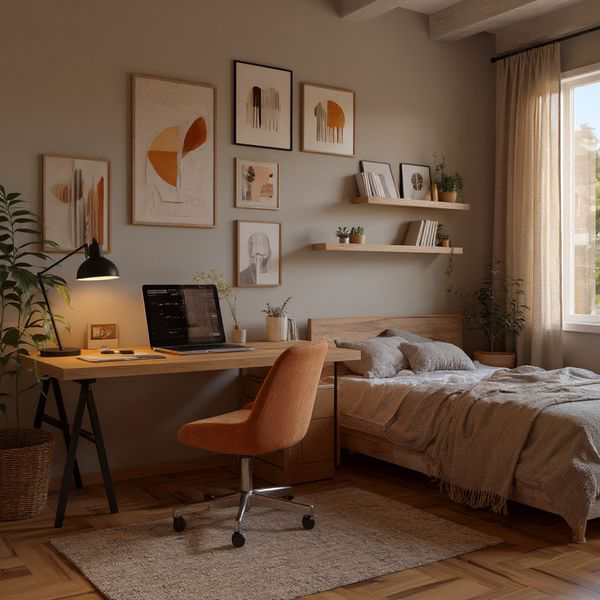17 Amazing Kitchen Organization Ideas to Transform Your Space
A well-organized kitchen is the heart of a functional home. Kitchen organization isn’t just about making things look neat; it’s about efficiency, safety, and even reducing food waste. Studies show that an organized kitchen can save up to 30 minutes a day on meal preparation and reduce household stress significantly. When everything has its place, cooking becomes more enjoyable, and cleanup is less daunting. From smart storage solutions to layout tweaks, there are countless ways to improve your kitchen workflow.
The first step toward a functional kitchen is understanding how you use your space. Observing your cooking patterns, meal prep habits, and shopping routines can help identify clutter hotspots. An organized kitchen is also environmentally beneficial—when items are easy to find, food is less likely to expire, and energy efficiency improves because you spend less time searching for appliances or ingredients.
Zone Your Kitchen for Efficiency

Creating specific zones in your kitchen helps streamline your workflow. Separate areas for cooking, cleaning, prep, and storage reduce chaos and allow multiple tasks to happen simultaneously. For example, keeping cutting boards, knives, and mixing bowls near the prep area saves unnecessary steps, while storing spices and oils near the stove keeps your cooking flow smooth.
Zoning also helps families maintain order. Each zone can have dedicated storage, making it easier for children or roommates to find what they need without disrupting your setup. This method isn’t just about placement—it’s about creating a mental map of your kitchen so that every item has a logical home.
Optimize Cabinet and Drawer Space

Cabinets and drawers are the backbone of kitchen organization. Use pull-out shelves, adjustable racks, and dividers to maximize storage. Installing sliding trays or lazy Susans in corner cabinets can prevent items from becoming lost or forgotten.
Organizing drawers by item type—utensils in one, gadgets in another—also improves efficiency. Consider using transparent containers or drawer labels for small items like measuring spoons and cookie cutters. This simple system can prevent constant rummaging and maintain a visually clean kitchen.
Pantry Organization That Works

A disorganized pantry is a common source of food waste. Clear, airtight containers allow you to see exactly what you have, and labeling everything prevents confusion. Group similar items together, like baking ingredients, cereals, and canned goods, for faster access.
Rotate pantry items regularly to ensure that older items are used first. Applying the FIFO (First In, First Out) principle reduces spoilage and keeps your stock fresh. Even small kitchens can benefit from vertical storage to maximize shelf space.
Refrigerator and Freezer Hacks

Your fridge and freezer can be a clutter hotspot if not organized properly. Use bins and baskets to separate fruits, vegetables, dairy, and meats. Assigning each type of food a dedicated spot reduces cross-contamination and simplifies meal prep.
Temperature zones are also important. Keep raw meats at the bottom to prevent drips, and store fruits and vegetables in designated drawers to maintain optimal freshness. Freezer organization matters too; use labeled bins for frozen fruits, meats, and leftovers to reduce food loss.
Decluttering for a Minimalist Kitchen

Less is more when it comes to kitchen organization. Regularly assess which appliances and utensils are used frequently. Duplicate tools or rarely used gadgets take up valuable space and contribute to visual clutter.
Adopting a minimalist approach doesn’t mean sacrificing style or function. By keeping only essential items, you create a cleaner, more navigable kitchen. Decluttering also allows you to appreciate the items you truly love and use.
Smart Storage Solutions

Drawer organizers, spice racks, and utensil holders are small investments that make a big difference. Wall-mounted racks, hooks, and rails free up counter space and keep essential items within reach.
Think creatively about storage. Over-the-door racks for pantry doors or inside cabinet doors for cutting boards and lids can maximize space in ways many homeowners overlook. Even a small kitchen can feel spacious with clever organization.
Maximize Counter Space

Counters often become dumping grounds for mail, groceries, and gadgets. Keeping them clutter-free is essential for both aesthetics and functionality. Use trays or baskets to corral items temporarily if you must keep them on the counter.
Consider adding vertical storage or hanging solutions for frequently used tools. Even a few hooks for measuring cups or a knife rail can free up significant counter space, making cooking safer and more enjoyable.
Use Clear Containers
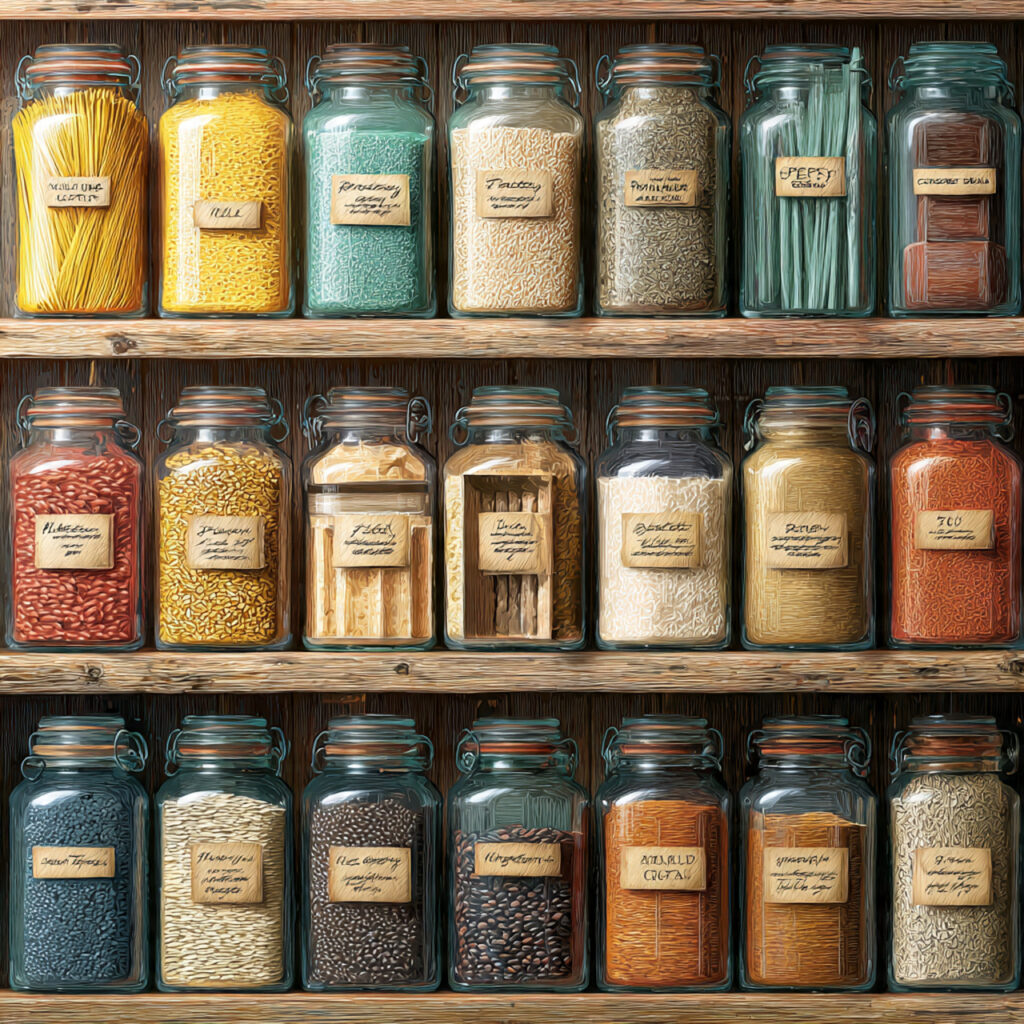
Transparent containers are both functional and visually appealing. They allow you to quickly identify ingredients and monitor stock levels. Glass containers are particularly useful for pantry items, as they also reduce plastic use and increase durability.
Uniform containers create a streamlined, cohesive look, which can make your kitchen feel more organized even if space is limited. Investing in high-quality containers pays off over time as they prevent spills and spoilage.
Label Everything

Labels are a game-changer for kitchen organization. Use chalkboard labels, printed labels, or even color-coded systems to identify items in your pantry, fridge, or drawers.
Labeling isn’t just about clarity; it also encourages everyone in the household to return items to their proper place. When everyone knows where things belong, maintaining organization becomes effortless.
Utilize Vertical Storage
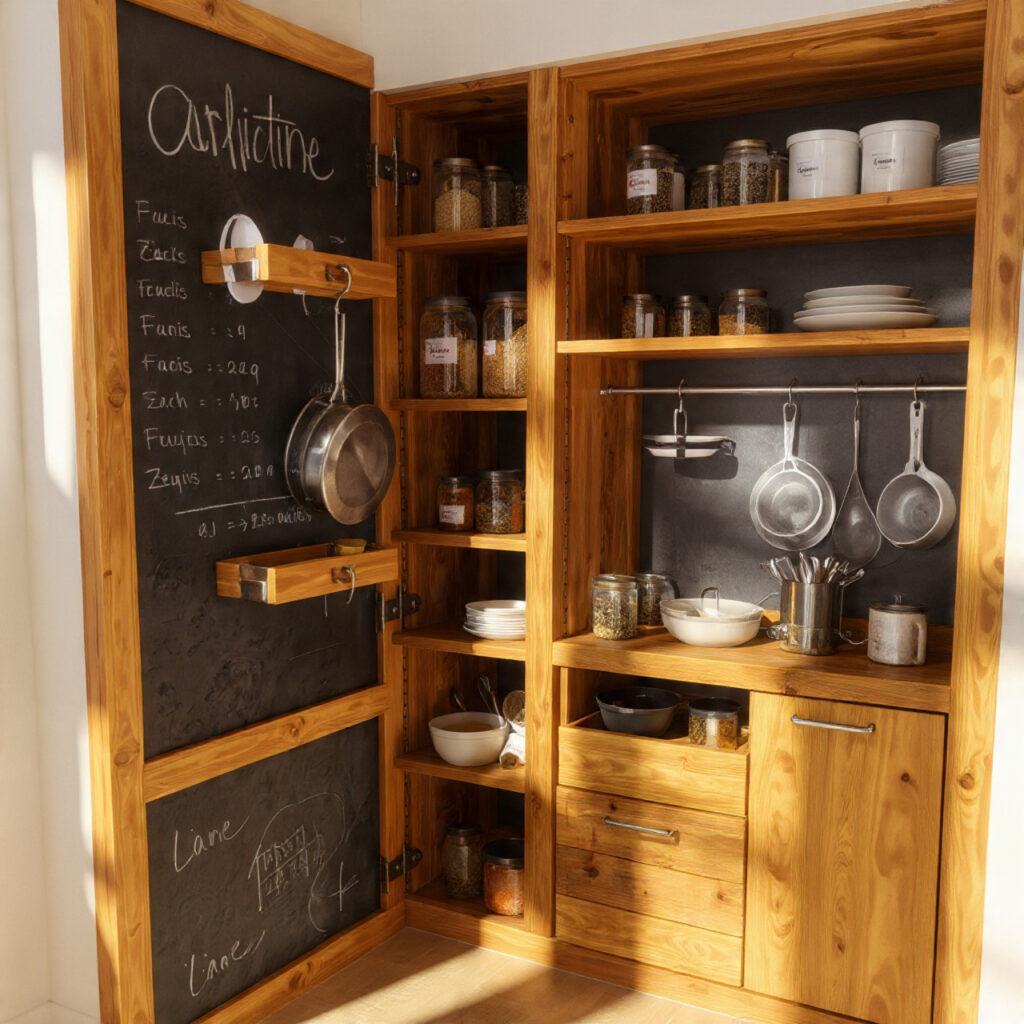
When floor and counter space is limited, vertical storage is key. Wall-mounted shelves, hanging racks, and tall cabinets can dramatically increase storage capacity.
This approach works well for pots, pans, spices, and even cookbooks. Vertical storage turns “dead” wall space into practical storage without overcrowding your kitchen.
Invest in Multi-Functional Appliances
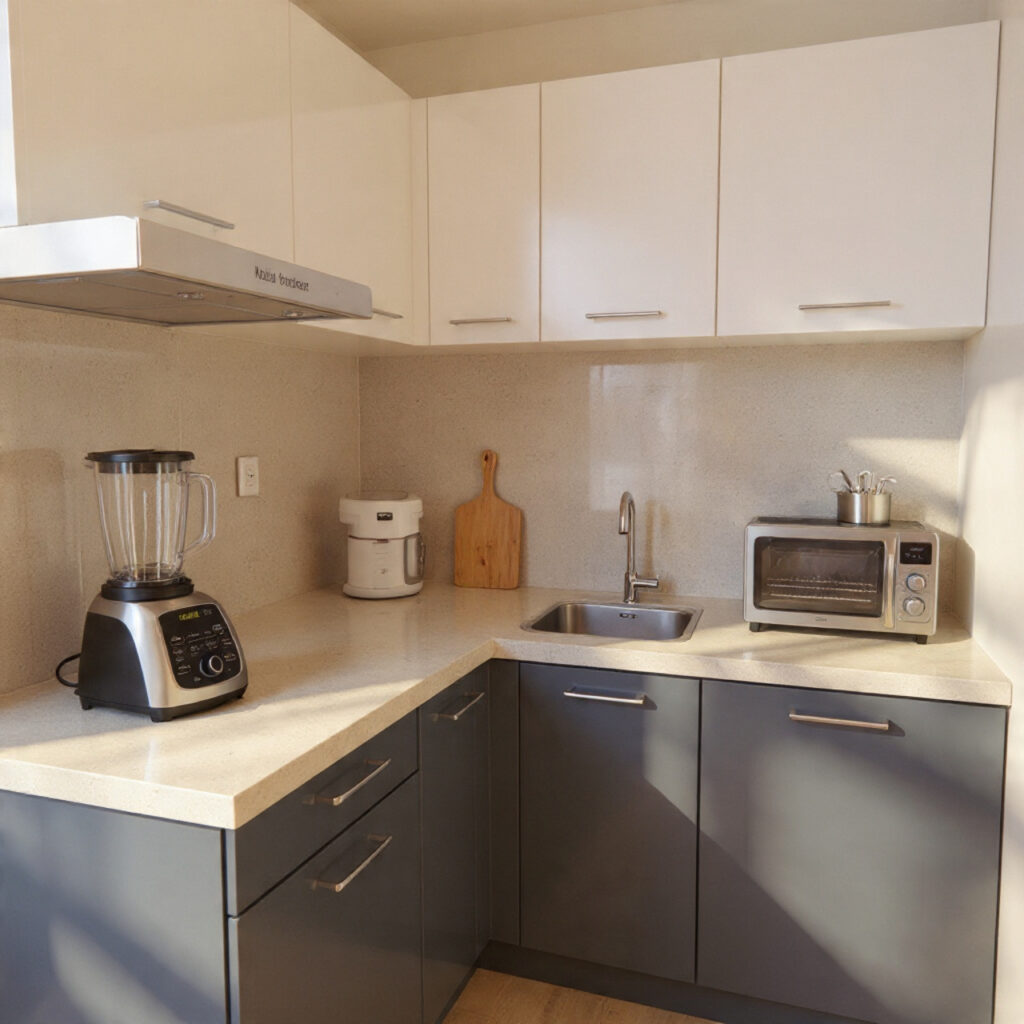
Smaller kitchens benefit greatly from appliances that serve multiple purposes. Multi-cookers, blender-food processor combos, and toaster ovens reduce the need for multiple gadgets.
Fewer appliances mean fewer cords, less clutter, and easier cleaning. Multi-functional devices also encourage experimentation with new recipes, as they simplify complex cooking processes.
Keep a Cleaning Routine
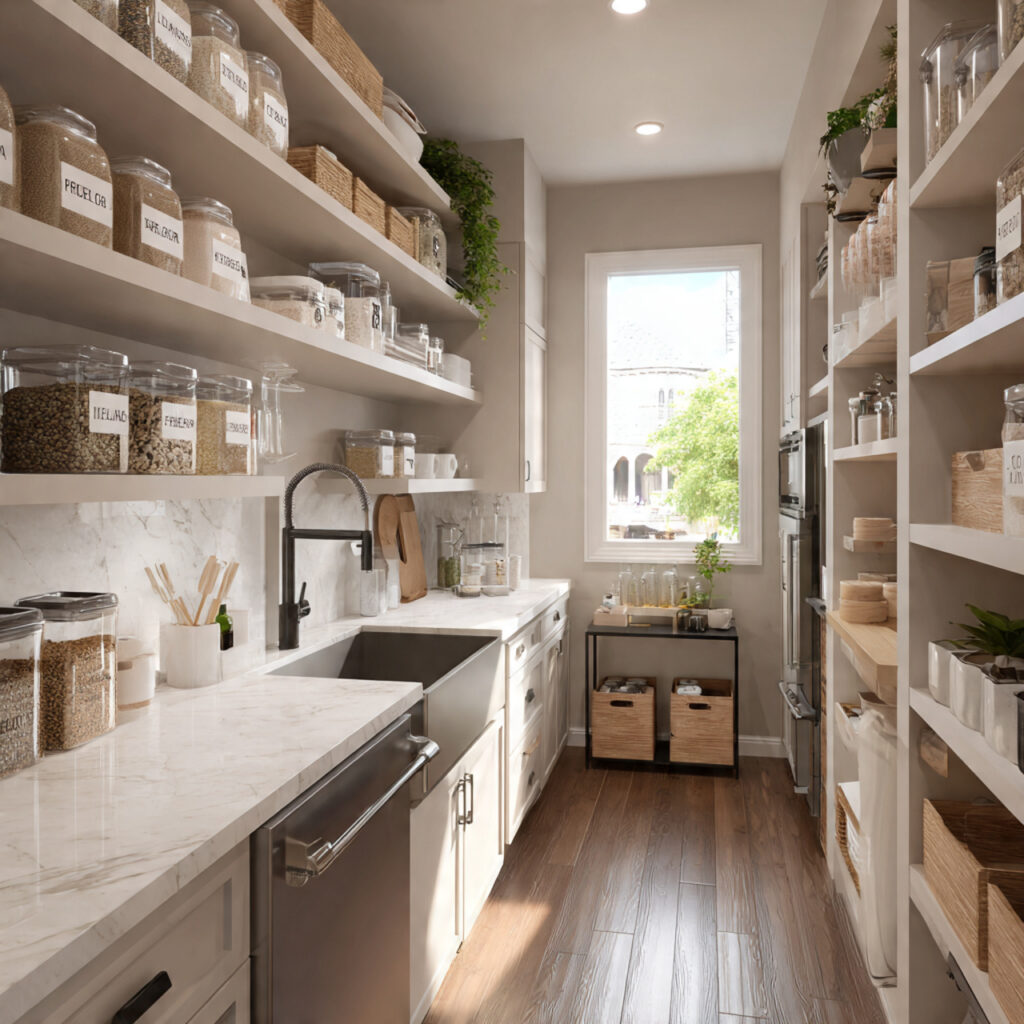
An organized kitchen is easier to maintain with a consistent cleaning routine. Wiping counters daily, checking pantry stock weekly, and cleaning appliances monthly prevent clutter from building up.
Maintenance isn’t about perfection—it’s about creating habits. A kitchen that’s consistently cared for looks better, functions more efficiently, and reduces stress during meal prep.
Make Use of Drawers Wisely

Deep drawers can hold pots, pans, and larger kitchen tools. Shallow drawers are perfect for utensils, cutlery, and smaller gadgets. Organizing drawers by function helps prevent frustration during cooking.
Consider drawer inserts or trays to keep items separated and prevent shifting. This ensures that everything stays in place, even when drawers are opened frequently.
Maximize Small Kitchens

Small kitchens require creativity. Use foldable or extendable surfaces to increase prep space when needed. Compact furniture like rolling islands or collapsible tables can double as storage.
Even in tight quarters, vertical storage, hooks, and hanging baskets can make a huge difference. Maximizing every inch helps small kitchens feel functional and comfortable.
Incorporate Smart Technology

Apps and smart devices can elevate kitchen organization. Inventory apps track pantry and fridge items, while meal planning apps streamline grocery shopping and prep.
Smart appliances like sensor-based bins, smart refrigerators, or connected ovens reduce food waste and improve efficiency. Technology isn’t a gimmick; it’s a practical tool for modern kitchens.
Organize by Frequency of Use

Place everyday items within easy reach and store rarely used items higher or lower. This simple strategy reduces daily frustration and improves workflow.
Think about the sequence of your cooking tasks. Organizing by frequency ensures that the tools and ingredients you reach for most often are always ready.
Personalize Your System

No two kitchens are identical, so personalization is key. Consider your habits, family size, and cooking style when designing organization systems.
A system that works for one person may fail for another. Experiment with layouts, storage solutions, and routines until you find the method that suits your lifestyle best.
Frequently Asked Questions
How often should I declutter my kitchen?
Decluttering once every 3–6 months is ideal. This ensures that expired food, broken gadgets, and unused items are removed regularly without overwhelming the process.
What’s the best way to organize a small kitchen?
Vertical storage, foldable furniture, and multi-functional appliances are essential. Utilizing walls, corners, and cabinet doors maximizes space efficiently.
How do I prevent my fridge from becoming messy?
Use bins and baskets to separate food types, store raw meats at the bottom, and label shelves. Assigning zones helps maintain order over time.
Are clear containers really better than opaque ones?
Yes. Clear containers let you see contents at a glance, prevent overbuying, and reduce food waste. Glass containers are more durable and environmentally friendly.
How can technology help with kitchen organization?
Inventory apps, meal planners, and smart appliances track stock, reduce waste, and streamline cooking. Smart solutions save time and enhance efficiency.
Conclusion
Kitchen organization is about more than tidiness—it’s about creating a space that supports your lifestyle. From zoning and decluttering to smart storage solutions and technology, every small adjustment can make a big difference. An organized kitchen improves efficiency, reduces stress, and even saves money by reducing food waste. By implementing these 18 ideas, anyone can transform their kitchen into a functional, enjoyable heart of the home.

